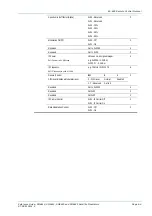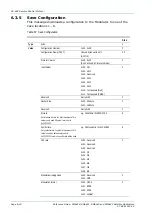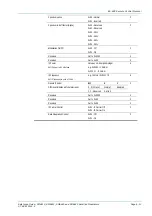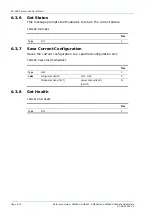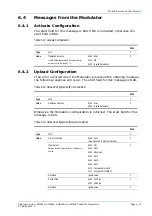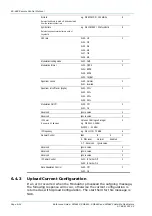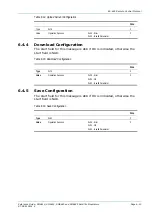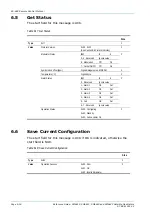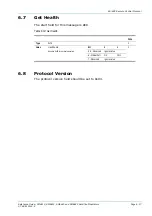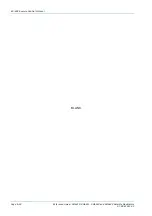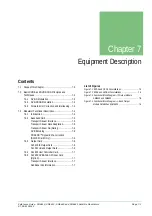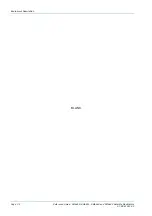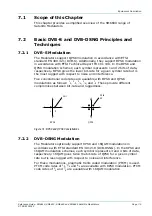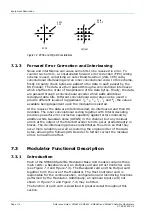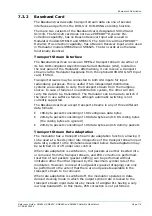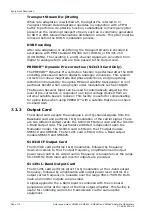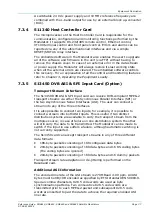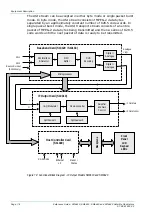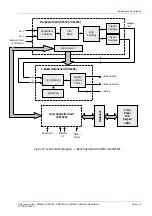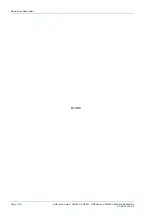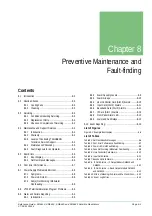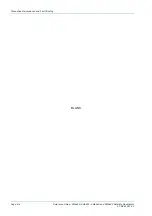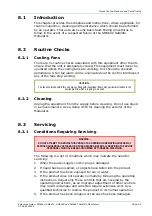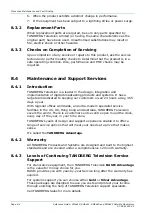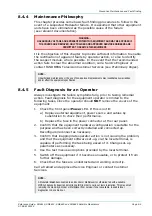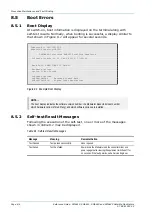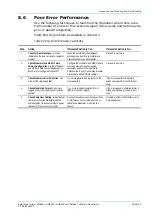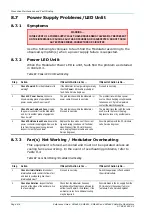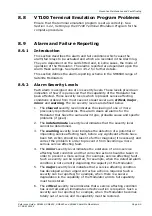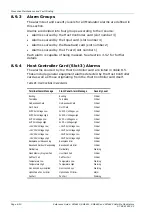
Equipment Description
Reference Guide: SM6610, SM6615, SM6620 and SM6625 Satellite Modulators
Page 7-5
ST.RE.E10152.2
7.3.2 Baseband
Card
The Baseband card accepts transport stream data via one of several
interfaces and performs the DVB-S or DVB-DSNG encoding function.
There are two variants of the Baseband card, designated S13129 and
S13133. The S13129 card does not have PREKOR™ Dynamic Pre-
correction capability, has no Beacon Receiver Input and is used in
Modulator models SM6610 and SM6615. The S13133 card has PREKOR™
Dynamic Pre-correction capability, has a Beacon Receiver Input and is used
in Modulator models SM6620 and SM6625. The two cards are otherwise
functionally identical.
Transport Stream Interface
The Baseband card can receive an MPEG-2 transport stream via either of
its two DVB-compliant Asynchronous Serial Interfaces (ASI), located on
the rear panel of the Modulator. Alternatively, it can receive a transport
stream via the Modulator backplane from the optional DVB ASI & SPI Input
card, if fitted.
Transport streams may be connected to both ASI inputs for input
redundancy purposes. This is useful if two independent distribution
systems are available to carry the transport stream from the multiplex
source. In case of failure of one distribution system, the other will still
carry the data to be transmitted. The Modulator can be made to switch if
the input in use suffers a failure, although automatic switching is not
currently supported.
The Baseband card can accept transport streams in any of three different
data formats:
•
188-byte packets consisting of 188 contiguous data bytes
•
204-byte packets consisting of 188 data bytes and 16 RS coding bytes
(the coding bytes are ignored)
•
204-byte packets consisting of 188 data bytes and 16 dummy packets
Transport Stream Rate Adaptation
The modulator has a transport stream rate adaptation function, allowing it
to be used at a fixed symbol rate irrespective of the transport stream input
data rate, subject to the limitations described below. Rate adaptation may
be switched on or off under user control.
When rate adaptation is switched on, null packets are either inserted into
or removed from the transport stream, and PCR correction is performed.
Insertion of null packets (packet stuffing) can be performed without
limitation other than that imposed by the maximum symbol rate of the
modulator. However, removal of null packets (packet dropping) can only
be performed to the extent that there are null packets available in the
transport stream to be removed.
When rate adaptation is switched off, the modulator operates in data-
derived clocking mode in which the output symbol rate is locked to the
transport stream input data rate by means of a digital PLL having a very
low loop bandwidth. In this mode, PCR correction is not performed.
Содержание SM6610
Страница 10: ...Introduction Page 1 2 Reference Guide SM6610 SM6615 SM6620 and SM6625 Satellite Modulators ST RE E10152 2 BLANK...
Страница 138: ...Equipment Description Page 7 2 Reference Guide SM6610 SM6615 SM6620 and SM6625 Satellite Modulators ST RE E10152 2 BLANK...
Страница 172: ...Licence Keys Page 10 2 Reference Guide SM6610 SM6615 SM6620 and SM6625 Satellite Modulators ST RE E10152 2 BLANK...

